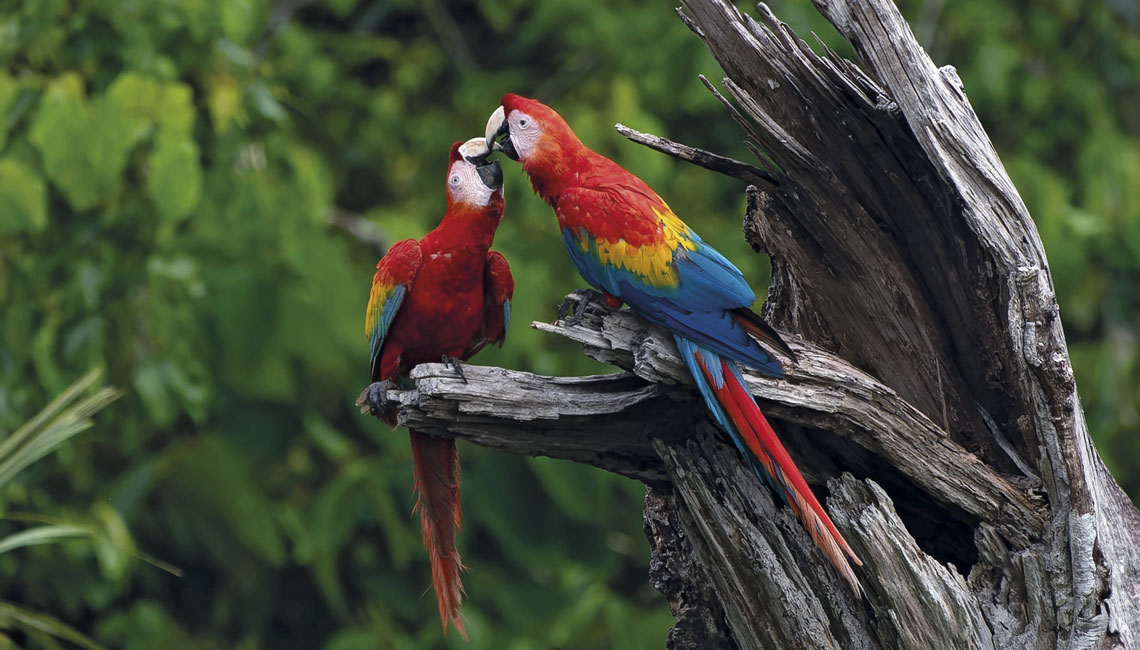The Brazilian Institute of Geography and Statistics (IBGE) analyzed over 22.5 million records of the occurrence of species of Brazilian biodiversity collected over the centuries and concluded that knowledge about the nine large taxonomic groups in the national territory is extremely uneven, which could create biases in research based on this information and jeopardize conservation actions. The assessment was published by the institution in November and shows that states such as São Paulo and Rio de Janeiro, and the Federal District, probably due to concentrating many universities, scientific collections, and museums, are the states with the greatest number of records of amphibians, arthropods, birds, fungi, mammals, mollusks, fish, plants, and reptiles—the groups selected in the study. There is a sparsity of data for the states in the Northeast, while those in the North show deserts of knowledge in several parts of their territory.
There is also a striking contrast between the records of species that inhabit the sea and terrestrial environments. On dry land, around 6% of the cells (divisions of the country’s territory in 50 x 50-kilometer squares) have no occurrence of species while in the sea there is no information in 81% of the cells. The IBGE assessment attributed the difference to the difficulty of access and to the operational costs of marine research. Birds have the highest number of records (around 11 million), followed by plants (7.7 million), while mollusks (255,000), fungi (252,000), and mammals (around 190,000) are the least known groups. Another characteristic relates to the robustness of the data. With the exception of birds, less than 30% of the records provide complete information, such as the exact identification of the species and coordinates of the location.
The analysis used data from the Brazilian Biodiversity Information System (SIBBR), a platform created in 2014 by the Ministry of Science, Technology, and Innovation (MCTI). The registries are obtained by various means. The main one is through biological collections organized by scientific institutions and museums, responsible for at least 80% of the records of amphibians, arthropods, fungi, plants, and reptiles. Since only a part of the collections was digitalized, the information from the SIBBR does not represent all of the records. Another source is citizen science, which involves the participation of laypersons or those without scientific training in the collection of field data (see Pesquisa FAPESP issue nº 323). The bird group was the one which benefited most from information collected by amateurs. Of the almost 10.8 million records, 94% were obtained thanks to the observations made by nature lovers. There are also records from scientific studies and others that do not fit into any of the three categories.

The study provides a synthesis indicator, which is the index of biodiversity knowledge, based on the quantity of records accumulated from the nine taxonomic groups and on how recent these data are. On a scale from 0 (less knowledge) to 18.77 (greater knowledge), the majority of the national territory does not surpass 0.93. In vast regions of the sea in Brazilian territory and in parts of the Amazon rainforest in the states of Pará and Amazonas, the situation is critical—they are invisible regions to science and conservation because there are no published records of their fauna and flora in the SIBBR. On the other hand, portions of the coast of the states of São Paulo, Rio de Janeiro, and Espírito Santo have high levels of knowledge above 8.65. The groups in which there is the greatest lack of information are fungi and mollusks.
Known for producing the demographic Census every 10 years and creating reference indicators about social and economic activities, the institute is also dedicated to studies about biodiversity, as well as managing a protected area, the IBGE Ecological Reserve, aimed at research about the Cerrado (wooded savanna) biome, to the south of Brasília. The body keeps its own biological collections. In the 1980s, it incorporated the herbarium from the Radam Brazil project, created in the 1970s in order to monitor land use in the country, especially in the Amazon, using radar images captured by airplanes. It also has another herbarium and zoological collections in its ecological reserve.
Biologist Leonardo Bergamini, a biodiversity analyst for the IBGE and one of the people responsible for the assessment, explains that the body has an interest in the information from the SIBBR because it is an important input for the studies of its environmental economics accounting program, which seek to understand the interactions between the environment and economic agents and clarify the contributions of nature to human society. “Our study sought, in an experimental way, to assess the quality of available data and contribute towards improving them.”


